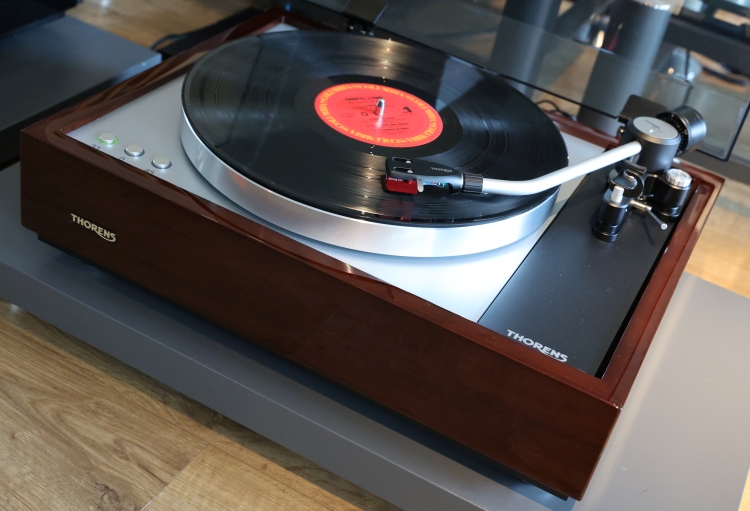
Review sample supplied by Penhold, distributor for the Benelux
Retail prices in the NL, including 21% VAT:
TD1600 incl TP 160 – 3.499 euro
TD1601 incl TP 160 – 3.999 euro
Extra headshell for TP 160 – 100 euro
TAS 1600 Cartridge – 1.199 euro
TAS 1500 Cartridge – 849 euro
Recently, Thorens issued a new tonearm, the TP 160, which is now fitted as standard to the TD 1600 and TD 1601 turntables instead of the TP 92 arm. In this review, I will assess how these two arms compare using, among others, two Thorens TAS 1600 cartridges and a TAS 1500.
TD 1600 / TD 1601
The TD 1600 and TD 1601 are the successors to the famous classic TD 160 MkII. When I reviewed the TD 1601 in 2019, I was so impressed with it that I kept it and sold all my classic players. To this day, I never looked back. As great as those classics were, the new models perform on a significantly higher level across the board.
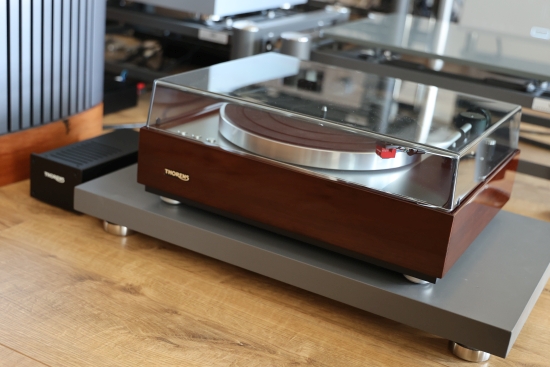
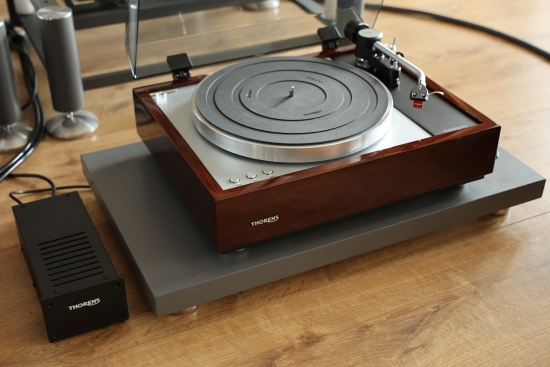
The TD 1600 and TD 1601 are basically the same player with two differences pertaining to the control of the tonearm lift. The TD 1600 is a purely manual turntable with a classic lever next to the tonearm pivot to lower and lift the tonearm. The TD 1601 adds a motorized lift that adds automatic lift and platter shut off at the end of the record. This function is operated via a soft-touch button located on the fixed section of the chassis, which very effectively prevents wobble while operating the lift. The touchless optical detection mechanism does not affect the free movement of the tonearm, and thus, it 100% upholds the sound quality. The detection mechanism relies on a predefined position for the end of the lead-out groove. However, some records deviate from this by containing more music than normal, which can lead to premature shut-off. The predefined position is normally set in the factory but the updated TP 160 version adds an adjustment feature conveniently accessible from the player’s top side. It should normally be left in the factory setting but if required or desired, it can be adjusted by the user.
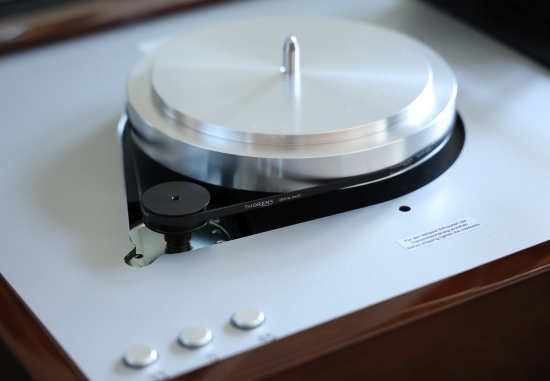
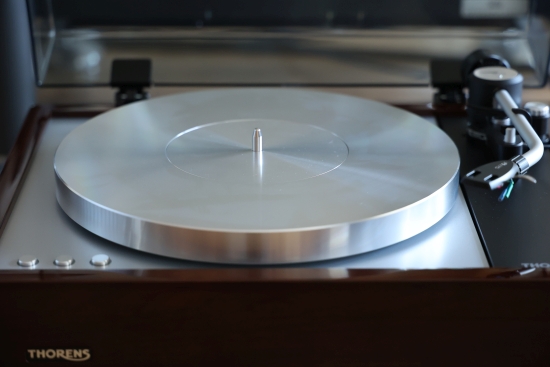
Although I’d love to elaborate further on what makes these turntables so great, I’ve already written an extensive review, and I encourage the reader to (re-)visit it for all the finer details.
This review focuses on the new TP 160 tonearm, which is now fitted as standard to the TD 1600 and TD 1601. The turntable itself may be the same, but this new arm has a few new tricks up its sleeve that take the player’s character and overall performance in a new direction. Incidentally, the new TP 160 tonearm now comes as standard, but if desired, you can still order the turntable with the TP 92 tonearm.
By request through Thorens, the new TP 160 can also be retrofitted to existing TD 1600 or TD 1601 models.
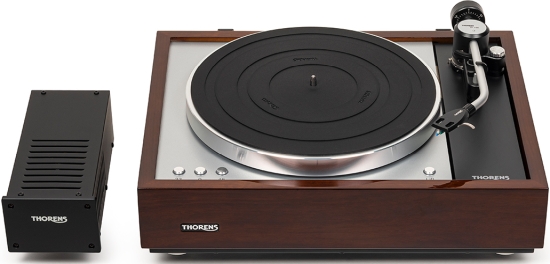
The TD 1600 and TD 1601 have an external power supply unit, pictured on the left. I’ve experimented with its placement and found that the sound can be tweaked this way. On the ground, the sound is fullest and most sonorous, whereas placement on the Artesania Krion platform provided a leaner, tighter, and spicier sound.
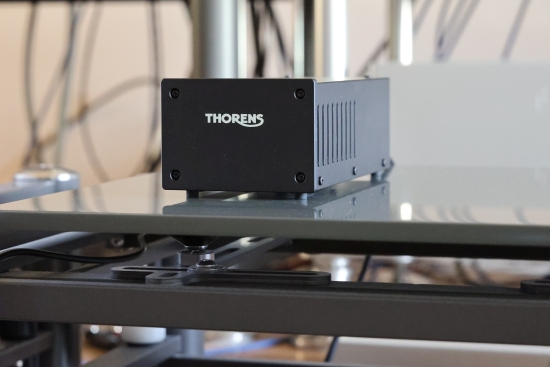
While the TAS 1600 was still running in, I preferred the sound with the power supply placed on the Artesania platform, but at a later stage, I preferred it on the ground.
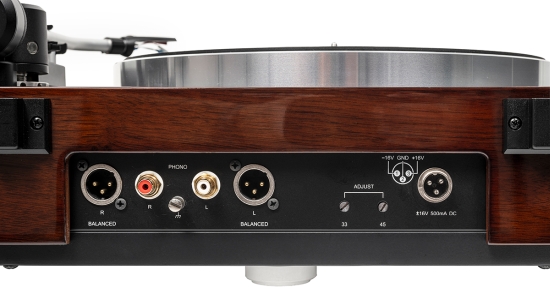
Both Balanced and Unbalanced connections are provided, and the speed can be adjusted for separately for 33 and 45 RPM.
Manual lift Considerations
With the manual TP 160 arm, the lift lever is less damped and more direct in its operation than arms equipped with the standard Rega lifts and levers. If the lever is simply pulled all the way forward, the stylus will land onto the record too quickly, leading to a thud from the speakers. Instead, you need to guide the lever in a gentler manner, but you get accustomed to this soon enough.
Another aspect of the manual lift operation is that the lever is directly attached to the arm. As such, any non-linear hand movements are transferred to the sub-chassis, incurring wobble and, potentially, making the stylus skip in the groove. This aspect is exacerbated by the damping pad on the arm lift being quite compliant. Due to this, any incurred wobble to the sub-chassis translates to a larger wobble in the arm while it is lifted, which sometimes interferes with accurate cueing.
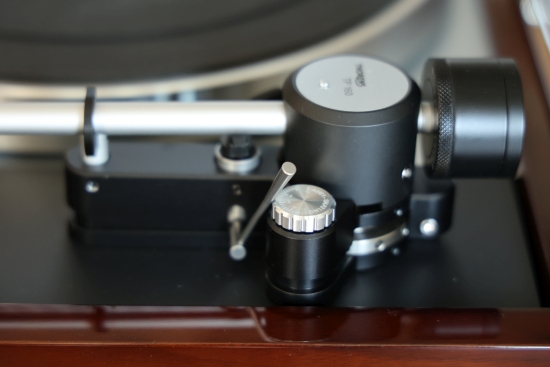
What I found odd is that the arm lift lever sits smack against the anti-skating dial when in the up position. This makes it harder to grab it securely and can cause accidentally grabbing the dial during hand travel, thus incurring a wobble.
Of course, there is an easy and elegant solution for all this: opting for the 1601 version over the manual 1600 version turntable. Not only does this get you an electric arm lift that is operated via a button that sits on the external chassis, safely disconnected from the sub-chassis, but it also adds automatic shut-off at the end of the record. The manual TD 1600 is a great way to save some cash while retaining 100% of the sound quality. But for those who can be a little clumsy (as I can be), the TD 1601 is the safer and more comfortable option.
Next: TP 160 tonearm
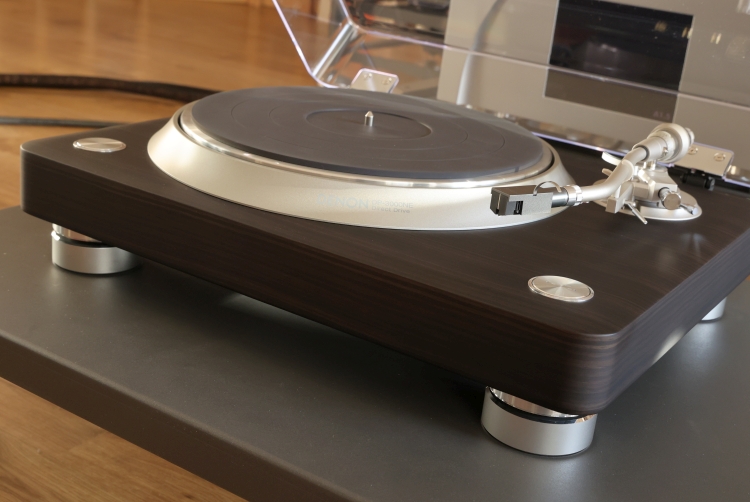
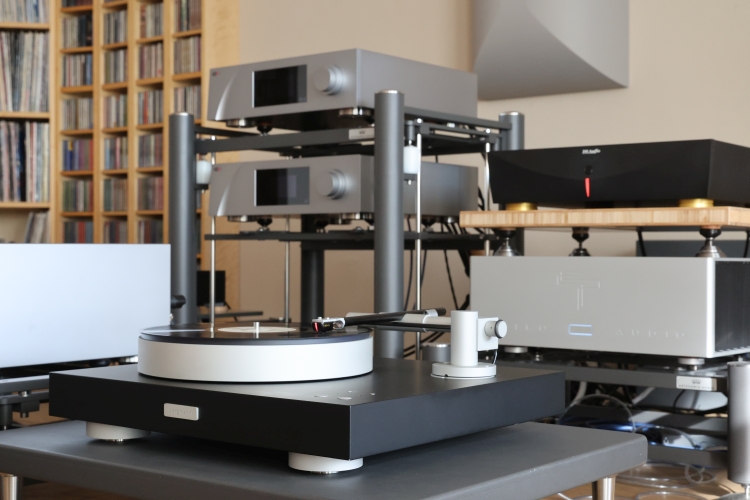

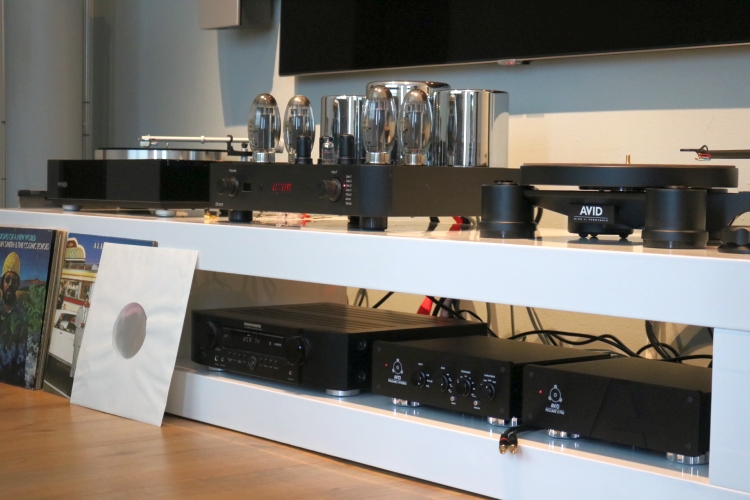
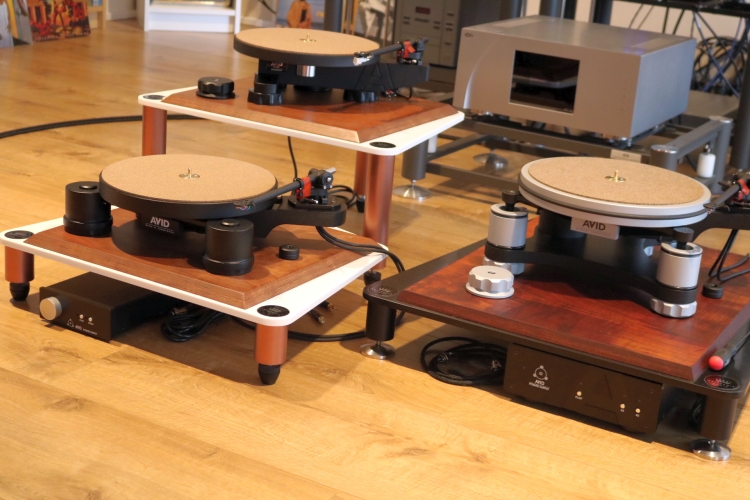
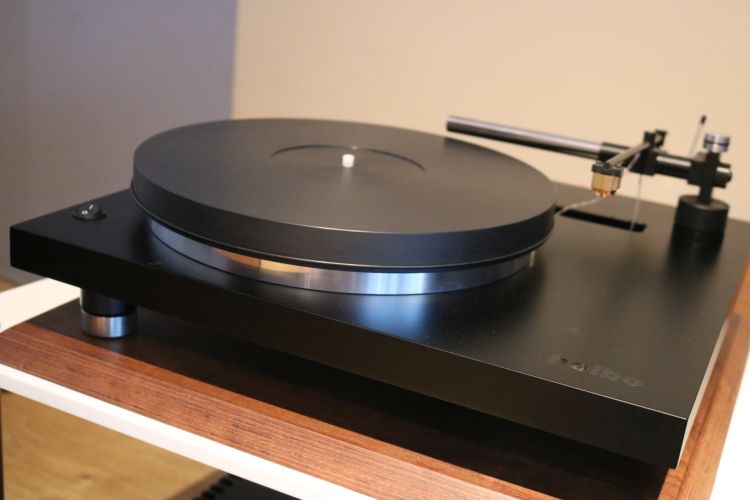
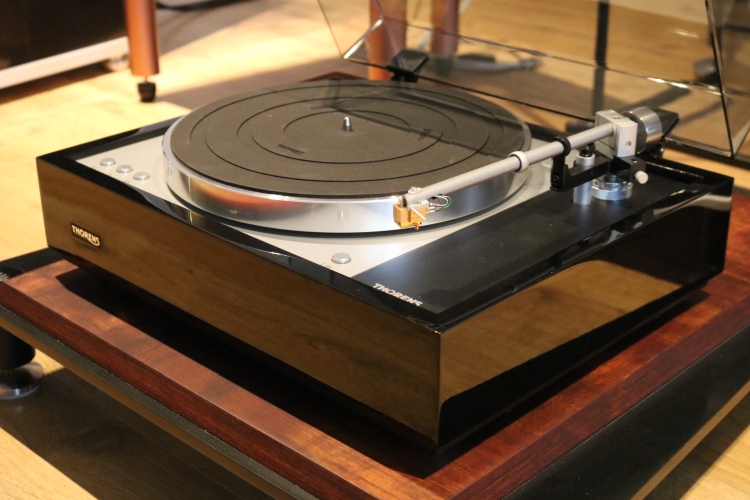
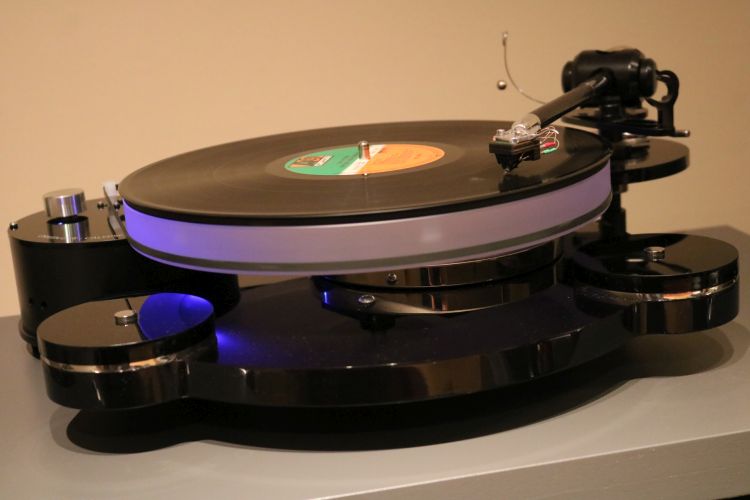
Yet another superb review, thanks. For whatever it is worth, I found a discrepancy between the general info and the manual regarding the TP 160 effective mass. I emailed Thorens and Mr. Gunter Künter himself answered: it is 16 grams.
Thanks, Vladimir. I have now amended the Effective Mass value in the review from 15 grams to 16 grams.
Hello Christiaan
I’ve just bought a new TD 1600 with 92 tonearm. After properly set up to my surprise the suspended chassis is wobbling side to side like 1,2 mm while playing. And when actually starts it is like a little earth quake shaking (if I may say that). Then it is slowly attenuating, but when playing is not steady still.
I haven’t contacted the dealer yet, since I’m not sure if this is a normal behavior or not.
Kindly please advise
John
The wobble when starting the platter is normal, some players (sometimes the belts) have it more than others. I wouldn’t worry about it. When on speed and rotating, the platter should be perfectly still. The subchassis can move freely to one side, but should be restrained to the opposing side. If there is play to both sides, the internal string should be tightened.